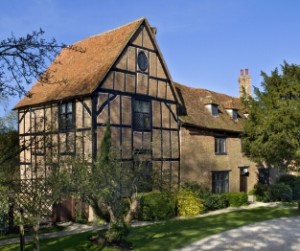A guest article by Christian Boulton from Nights In The Past.
It is always important to place emphasis on the adjective ‘reputed’ when referring to events where no written documentation remains – if, indeed, any documentation was ever made in the first place.
This is particularly true of the ancient inns of England, Scotland and Wales and the countless claims that many make with reference to famous visitors centuries ago. That said, while a few are almost certainly the work of fertile imaginations, there’s more than a metaphorical grain-of-truth to the vast majority.
Of course, the further one travels back in time the harder it becomes to substantiate such claims. A historic icon such as Charles Dickens, for example, was extremely well travelled, and accounts of his having stayed at hotels and inns throughout the UK are easier to verify by virtue of them being from little over a century and a half ago. Travel back to the 1600’s or further and the waters become a little cloudier.
So, if we know of some of Dickens’ former whereabouts, what of that other giant of English literature, William Shakespeare? Are there any surviving places one can stay today in which the “Bard of Avon” is supposed to have once done?
Alas, there are those which would have once offered lodgings to travellers that no longer do so. Such examples include the Golden Cross in Oxford – today a pizza restaurant – which is thought by some to have been patronised by Shakespeare, and the Old Bull in Inkberrow, Worcestershire (whose other claim-to-fame is in its being the real-life model for The Bull pub in BBC Radio’s, The Archers).
Another, The Bell Inn at Welford on Avon, is said to have been where the playwright drank soon before coming down with the pneumonia that some allege ended his life (though the actual cause of death is still unknown).
Similarly, we know of places with some connection to him which do offer accommodation, but in which he is unlikely to have actually stayed. These include the MacDonald Alveston Manor in Stratford-upon-Avon where, some believe, the very first performance of A Midsummer Night’s Dream took place. Similarly, the Harte and Garter in Windsor boasts an association, but the building is, alas, a 19th century replacement for the original.
As such, those wishing to actually sleep under the same roof as the creator of such works as The Taming of the Shrew and The Tempest have very few options. Of course, there are almost certainly more old inns where Shakespeare sojourned on his travels, but seemingly no record of his ever being there – written or verbal – remain.
One such place is The Spread Eagle in Midhurst, West Sussex – or so it is purported. Indeed, when it comes to celebrities of centuries-past, this ancient old building certainly has pedigree: Elizabeth I, Lord Nelson, Guy Fawkes and many others are all believed to have passed through its door. As such, it would be churlish to dispute popular opinion.
But for somewhere with a connection of which few can contest, one has to travel to small village in Buckinghamshire.
In the splendidly-named Grendon Underwood, between Bicester and Aylesbury, is an attractive part-Elizabethan building which today offers bed & breakfast accommodation to visitors from all over the world. Constructed during the 1570’s, the property was originally an inn called The Ship. Today, though, it is known as Shakespeare House on account that the author is said to have stayed on several occasions while travelling between Stratford and London.
Indeed, such is the level of certainty of his having slept here that one room in particular is thought to have been that in which he rested. Moreover, it has even been suggested that inspiration for A Midsummer Night’s Dream was found here.
Of course, we still come back to cautionary words such as ‘reputed’ and ‘alleged’. But Shakespeare had to rest somewhere on his journeys. And here seems as good a place to lay claim to such an honour as any.
















Leave a Comment